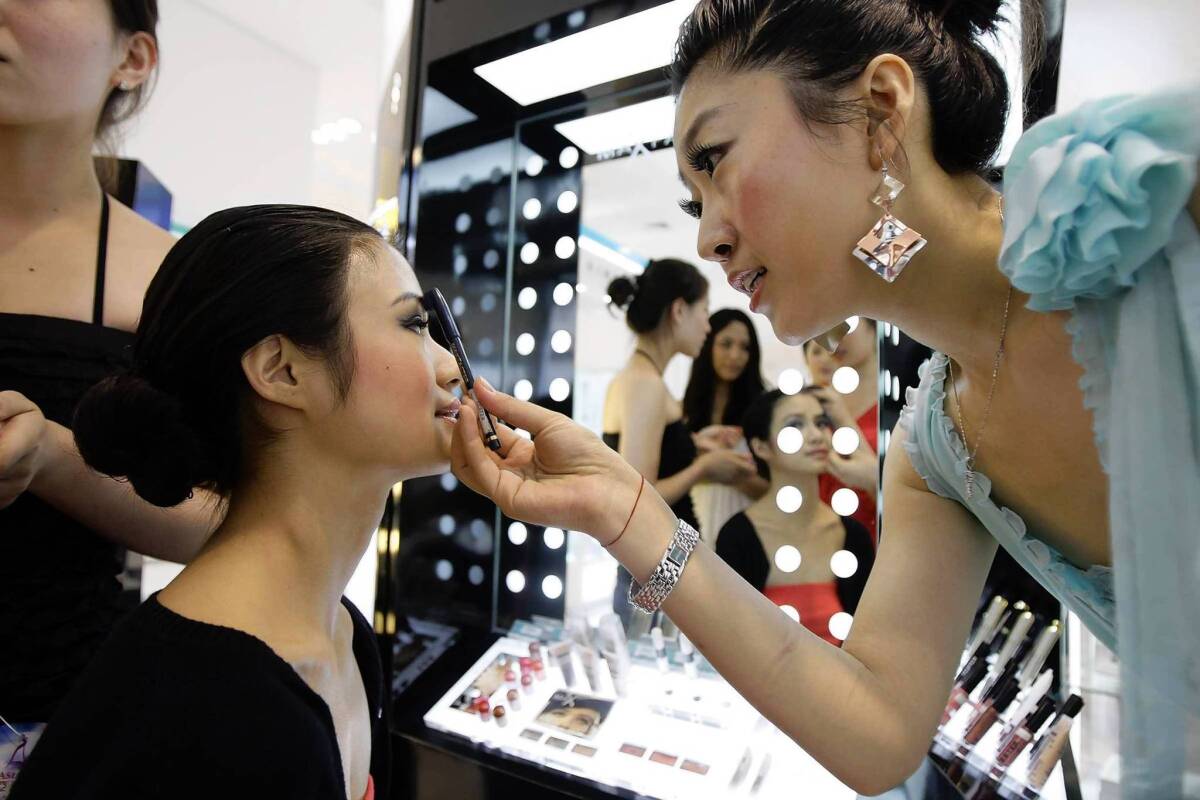Multitasking BB skin creams becoming popular in U.S.

Given their pedigree as a beauty staple for South Korean actresses, it may seem odd that BB creams would find their way into American beauty boutiques.
But the products — originally known as Blemish Balm — are among the hottest new additions to the U.S. beauty scene, with a growing number of both small and internationally known brands clamoring to launch them.
BB creams were formulated as skin lightening products and initially exploded in South Korea and Japan before spreading to China and other Southeast Asian countries — cultures where whiter skin is especially prized. The key component has typically been the inclusion of kojic acid (a fungus extract) and arbutin (a plant extract), both of which lighten and brighten skin. They were first developed in Germany in the 1960s before making their way east.
“I remember hearing all about BB creams 10 years ago in Korea,” said Erica Chung, a native of Seoul who is co-founder and creator of New York-based prestige skin-care line 3LAB. “Dermatologists started giving it to women after laser treatments, and then celebrities began using it. At the time, I didn’t think anything of it.”
Now Chung is one of a host of beauty entrepreneurs with a BB cream on the market. Her Perfect BB Cream SPF 40 came out last September.
But the general definition of a BB cream today has changed, now indicating a product that offers an all-in-one approach to skin care, incorporating moisturizer, anti-aging ingredients, sunscreen and coverage. Some offer a whitening component, others do not.
“Many of these products in the U.S. mainly contain sunscreen and moisturizers, and the botanical ingredients to lighten skin as in the Asian formulations have been reduced or removed,” says Dr. Nathan Newman, a Beverly Hills dermatologist and cosmetic surgeon.
And they are being referred to less often as blemish balms and more often as beauty balms. “Blemish balm is not really a good name,” Chung said. “They have nothing to do with acne. It’s all about giving off a healthy glow.”
Consumers are attracted to the creams because of the ease of using multipurpose products, because they are based on natural ingredients and because of concerns about hydroquinone, an ingredient often used in conventional skin lighteners that has been banned in several countries due to concerns that it could cause an increased risk of cancer.
Newman said that in selecting from one of the slew of BB creams on the market, shoppers should make sure that the product does serve a multitude of roles: sunscreen, moisturizer, anti-inflammatory, anti-wrinkle or skin lightener among them. Newman also suggested looking for titanium dioxide and zinc oxide as a sun block, since any lightening ingredients would be ineffective without proper sun protection.
Because many of them also act as a foundation and are tinted, they may not work for all skin tones, although some brands are working to counter that problem by putting out more than one shade. The 3LAB cream comes in three hues. Garnier Skincare, which has a popular mass market cream, offers two color options.
Retailers are picking up on customer interest. At the NewBeauty boutique at Fred Segal in Santa Monica, there are several BB creams, including offerings from CellCeuticals and Dr. Jart, a brand based in South Korea.
“BB creams are a huge trend right now,” said Elise Minton, executive beauty editor of NewBeauty magazine, which is affiliated with the store. “As more and more product companies add them to their stock-keeping units, I think the trend is going to continue to grow.”



